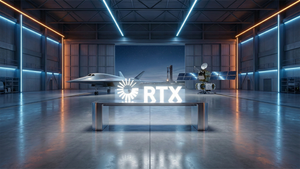
The second-quarter corporate earnings season has drawn to a close, painting a complex picture of resilience and vulnerability within the S&P 500. While a significant majority of companies defied expectations by surpassing earnings per share (EPS) estimates, a notable undercurrent of caution emerged as several prominent firms, including luxury goods giant Tapestry and agricultural machinery titan Deere & Company, slashed their profit outlooks, primarily citing the escalating impact of tariffs and broader economic uncertainties. This bifurcated performance has left investors grappling with a mix of optimism fueled by strong top-line growth and underlying apprehension regarding the long-term implications of global trade tensions.
The immediate implication of this earnings season is a reinforcement of the market's current bullish sentiment, particularly in sectors benefiting from technological advancements like Artificial Intelligence (AI). However, it also underscores the growing divergence between companies with strong domestic exposure or innovative growth drivers and those heavily reliant on international supply chains or facing direct tariff exposure. Investor confidence, while largely positive, remains tempered by the unpredictable nature of trade policy and its potential to erode corporate margins.
Strong Beats Masking Deeper Concerns
The Q2 2025 earnings season was characterized by an impressive display of corporate profitability, with approximately 80% to 82% of S&P 500 companies reporting actual EPS above estimates. This figure comfortably exceeded both the 5-year average of 78% and the 10-year average of 75%, with aggregate earnings for the quarter coming in 8.4% above estimates. This robust performance marked the third consecutive quarter of double-digit earnings expansion, largely propelled by the burgeoning Artificial Intelligence (AI) sector and the broader technology industry. Companies like NVIDIA (NASDAQ: NVDA) and Microsoft (NASDAQ: MSFT) continued to demonstrate strong growth, benefiting from increased demand for AI infrastructure and software solutions.
However, beneath this veneer of widespread success, the tangible impact of tariffs and economic uncertainty began to manifest. Luxury fashion house Tapestry (NYSE: TPR), the parent company of Coach and Kate Spade, notably revised down its fiscal 2026 profit outlook, attributing an anticipated $160 million negative impact directly to tariffs. Similarly, General Motors (NYSE: GM) reported a substantial $1.1 billion loss in profits due to tariff-related costs. These instances highlight how companies with extensive international supply chains and significant exposure to affected markets are bearing the brunt of trade disputes, facing higher input costs and tighter margins.
Deere & Company (NYSE: DE), a bellwether for the agricultural and construction sectors, also provided a stark example of these headwinds. The company reported a lower second-quarter profit and tightened its annual profit forecast for the fiscal year ending October 2025, citing an expected $500 million cost from U.S. import tariffs for the full fiscal year, with $100 million incurred in Q2 and an anticipated $400 million in the second half. This tariff impact, coupled with muted demand for agricultural equipment due to trade uncertainty and high interest rates, led to a projected 30% decline in large agricultural equipment sales in the U.S. and Canada for 2025. While Deere managed to exceed EPS and revenue forecasts for Q2 2025 through operational efficiency, its subsequent warning of an even larger pre-tax tariff impact of $600 million for fiscal 2025 following its Q3 2025 report underscored the escalating challenges.
Initial market reactions to the overall Q2 earnings season were largely positive, with the S&P 500 (INDEXSP: .INX) reaching new all-time highs in July. This surge was primarily driven by multiple expansion, reflecting investor optimism following a deferral of some tariffs and the strong performance of AI-driven companies. Despite the overall bullish momentum, there was a discernible trend where positive earnings surprises were rewarded less than average, while negative earnings surprises were punished more severely, indicating a cautious investor sentiment beneath the surface.
Winners and Losers in a Shifting Landscape
The Q2 earnings season clearly delineated the winners and losers in the current economic climate, largely dictated by exposure to technological innovation versus vulnerability to global trade friction.
The undeniable winners of this earnings cycle were companies deeply entrenched in the Artificial Intelligence ecosystem and the broader technology sector. Firms like NVIDIA (NASDAQ: NVDA), Google's Alphabet (NASDAQ: GOOGL), and Amazon (NASDAQ: AMZN) continued to report robust growth, driven by insatiable demand for AI infrastructure, cloud services, and digital transformation initiatives. Their strong performance not only bolstered their individual stock prices but also significantly contributed to the overall S&P 500's impressive earnings growth. These companies, often characterized by high margins and strong pricing power, have largely been insulated from, or even benefited from, the broader economic shifts.
Conversely, companies with significant international revenue exposure, particularly those in manufacturing, agriculture, and consumer goods, found themselves on the losing end. Tapestry (NYSE: TPR) and Deere & Company (NYSE: DE) serve as prime examples, directly citing tariffs as a major drag on their profitability and future outlooks. Companies with limited pricing power in competitive markets were particularly vulnerable, as they struggled to pass on increased tariff-related costs to consumers, leading to margin compression. Furthermore, businesses heavily reliant on global supply chains faced disruptions and increased operational complexities, impacting their efficiency and profitability. The automotive sector, exemplified by General Motors (NYSE: GM), also felt the pinch, highlighting the widespread impact across diverse industries.
Industry Impact and Broader Implications
The Q2 earnings season's narrative of strong beats alongside tariff-induced outlook cuts fits squarely into broader industry trends, particularly the accelerating digital transformation driven by AI and the persistent challenges posed by geopolitical trade tensions. The AI boom is not just a fleeting trend; it's fundamentally reshaping industries, creating new revenue streams, and driving efficiency gains for early adopters. This is evident in the disproportionate growth seen in technology and related sectors.
The ripple effects of tariff impacts extend beyond the directly affected companies. Suppliers to firms like Deere and Tapestry may experience reduced orders, while partners in their global supply chains face uncertainty. The automotive industry, already navigating a complex transition to electric vehicles, now contends with additional cost pressures from tariffs, potentially slowing investment or increasing vehicle prices for consumers. Regulatory and policy implications are significant; the ongoing trade disputes necessitate strategic adjustments from businesses, including re-evaluating supply chain geographies, exploring new markets, and lobbying for policy changes.
Historically, periods of trade protectionism have often led to increased costs for consumers, reduced corporate profitability, and slower economic growth. While the current situation is nuanced by the simultaneous boom in technology, the experiences of companies like Tapestry and Deere serve as a stark reminder of the potential for tariffs to erode the benefits of otherwise strong economic fundamentals. Comparisons to past trade wars suggest that while some domestic industries might see short-term gains, the overall economic impact can be negative, leading to reduced global trade and investment.
What Comes Next
Looking ahead, the trajectory of the financial markets will largely depend on the interplay between continued technological innovation and the evolving landscape of global trade policy. In the short term, investors will closely monitor upcoming economic data, particularly inflation figures and consumer spending trends, to gauge the broader economic health. The ongoing trade negotiations and any new tariff announcements will be critical, as further escalation could significantly dampen corporate outlooks across more sectors. Companies heavily impacted by tariffs will likely continue to explore strategic pivots, including diversifying their manufacturing bases, seeking new sourcing partners, and potentially adjusting their pricing strategies to mitigate costs.
In the long term, the emphasis on AI and digital transformation is expected to intensify, creating new market opportunities for companies that can effectively leverage these technologies. Businesses that invest in automation, data analytics, and AI-driven solutions are likely to gain a competitive edge, potentially leading to further market consolidation. Conversely, companies that fail to adapt to these technological shifts or remain overly exposed to geopolitical risks may face increasing challenges. Potential scenarios include a continued two-speed market, where tech and AI-driven companies thrive while traditional industries struggle with trade headwinds, or a broader economic slowdown if tariff impacts become more pervasive.
Conclusion
The Q2 earnings season has delivered a compelling narrative of resilience and vulnerability, underscoring the dual forces shaping today's financial markets. While the robust performance of the S&P 500, particularly driven by the AI and technology sectors, injected a fresh wave of optimism, the explicit profit outlook cuts by companies like Tapestry and Deere & Company due to tariffs served as a potent reminder of persistent geopolitical risks.
The key takeaway for investors is the increasing importance of discerning between companies with strong, innovation-driven growth engines and those highly susceptible to external economic and political pressures. The market moving forward is likely to remain volatile, with positive earnings surprises potentially yielding diminishing returns and negative surprises being met with harsher penalties. Investors should closely watch for further developments in trade policy, the continued adoption and impact of AI across industries, and any shifts in consumer demand. The ability of companies to adapt their supply chains, diversify their markets, and innovate in the face of uncertainty will be paramount in navigating the complex economic landscape of the coming months.





